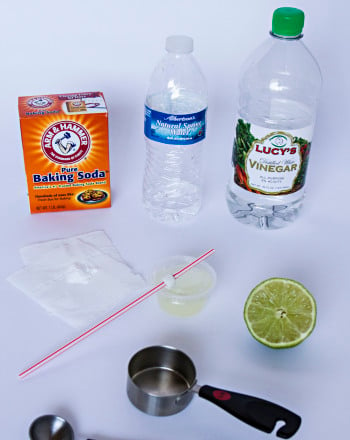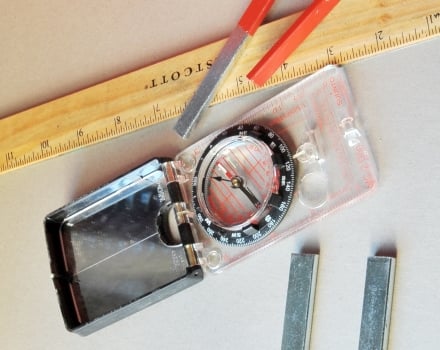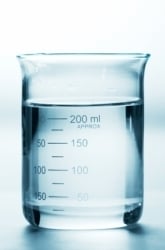Activity
Does Carbon Dioxide Raise the Temperature of the Atmosphere?
Difficulty of Project
Grade Level
Cost (Approximate Cost)
Safety Issues
This project requires the direct supervision of the child by an adult such as a parent/guardian. The procedures for the project include transferring solid dry ice to a container. Dry ice sublimes to form carbon dioxide gas rapidly with a large transference of energy. Great care needs to be taken to transfer the dry ice using utensils such as tongs to grip the ice.
Material Availability
Dry ice can be purchased from some grocery stores. Call to check on the availability of carbon dioxide at local grocery stores before purchasing. This project requires the use of probes to measure carbon dioxide concentration. Carbon dioxide probes can be purchased through online catalogs from companies such as Vernier and Pasco.
Approximate Time Required to Complete the Project
Objective
This project investigates the relationship between carbon dioxide gas and temperature of the atmosphere. The goals of the project include estimating the average temperature of the atmosphere within a closed container and comparing the temperature of the atmosphere following the addition of carbon dioxide gas and exposure to a heat source.
Materials and Equipment / Ingredients
- Carbon dioxide probe
- Digital Thermometer
- Dry Ice
- Heating lamp
- Stopwatch
- Tongs
- Two glass casserole dishes with removable lids
Introduction
Background Information
Global warming is a highly debated subject. Rising average annual temperatures have caused scientists to speculate on the possible causes and consequences. While many scientists analyzing historical trends believe global warming is a natural process, earth undergoing cycles of rising temperatures and periods of cooling. Some scientists have correlated rising carbon dioxide levels to global warming. NASA scientists measure carbon dioxide in the atmosphere and monitor increases in carbon dioxide levels. As the human population grows, the burning of fossil fuels increases evolving carbon dioxide gas into the atmosphere. Rising carbon dioxide levels is correlated with rising temperatures because carbon dioxide is believed to trap natural heat caused by surface warming of the Earth by the Sun. The natural heat usually escapes into space during night time. The carbon dioxide is believed to blanket the atmosphere and trap the heat causing the Earth’s surface to become insulated and causing temperatures to rise. This project attempts to simulate the processes on Earth and collect data to lend support to causes of global warming.
Research Questions
- What are the causes of global warming?
- What human activities increase production of carbon dioxide and decrease the recycling of carbon dioxide?
- What organisms play a role in the cycling of carbon?
- What evidence is used to support the idea of global warming as a natural process?
Terms, Concepts and Questions to Start Background Research
- Biogeochemical cycle
- Carbon dioxide
- Cellular respiration
- Deforestation
- Geologic history
- Global warming
- Greenhouse effect
- Photosynthesis
The diagram illustrates as the sun heats the surface of Earth, a carbon dioxide blanket traps the sun’s rays from naturally escaping into space.

Experimental Procedure
- Place two glass casserole dishes of equal size on a countertop. Remove the lids and place a temperature probe and carbon dioxide probe inside the first casserole dish.
- Replace the lids of the casserole dishes and tape the lids to the casserole dishes to ensure both dishes are sealed.
- Record the temperature and carbon dioxide levels in hourly increments over the course of several days.
- Place a heating lamp directly above both casserole dishes and record hourly increments of temperature and carbon dioxide levels over the course of the same number of days.
- Place 50 grams of dry ice inside one of the two casserole dishes and reseal the casserole dishes with the temperature and carbon dioxide probe inside.
- Record the temperature and carbon dioxide levels in hourly increments over the course of several days.
Bibliography
- U.S. Environmental Protection Agency
- “Global Warming” by Andrew C. Revkin New York Times, March 5, 2010
- National Climate Change Center
- “Global Warming” ©2008 by Stanford SOLAR Center
Education.com provides the Science Fair Project Ideas for informational purposes only. Education.com does not make any guarantee or representation regarding the Science Fair Project Ideas and is not responsible or liable for any loss or damage, directly or indirectly, caused by your use of such information. By accessing the Science Fair Project Ideas, you waive and renounce any claims against Education.com that arise thereof. In addition, your access to Education.com's website and Science Fair Project Ideas is covered by Education.com's Privacy Policy and site Terms of Use, which include limitations on Education.com's liability.
Warning is hereby given that not all Project Ideas are appropriate for all individuals or in all circumstances. Implementation of any Science Project Idea should be undertaken only in appropriate settings and with appropriate parental or other supervision. Reading and following the safety precautions of all materials used in a project is the sole responsibility of each individual. For further information, consult your state's handbook of Science Safety.














